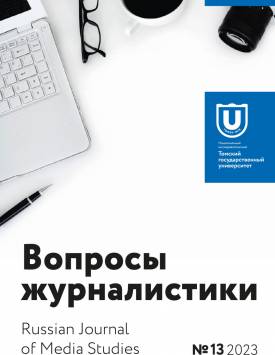The effectiveness of the journalistic text and speech aggression
The “language of enmity” is considered as the highest point of the development of speech aggression, for it contains explicitly expressed statements of an invective nature in relation to a person or a group of people and in a certain way affects the effectiveness of publicistic speeches. The effectiveness of journalistic influence depends on many factors, although in the first place there is always a problem to which the author gives novelty, adapts it in relation to the modern sociopolitical situation, possibly rethinking known facts and past events. The criteria of effectiveness (relevance, objectivity, persuasiveness, etc.) are applied taking into account speech - written or oral; each of them can be enhanced or, on the contrary, leveled by language. In the conditions of information warfare, language becomes both a means and an object of information confrontation. Concrete examples show how, in combination with methods and techniques of manipulation, speech aggression becomes an instrument of information warfare.
Keywords
hate speech, verbal aggression, manipulation techniques, journalism, criteria for evaluating publicistic speeches, effectiveness of publicistic textAuthors
| Name | Organization | |
| Bebchuk Yelena M. | Voronezh State University | bebchuk52@yandex.ru |
| Tulupov Vladimir V. | Voronezh State University | vlvtul@mail.ru |
References

The effectiveness of the journalistic text and speech aggression | Voprosy zhurnalistiki – Russian Journal of Media Studies. 2023. № 13. DOI: 10.17223/26188422/13/4
